آخرین مطالب
امکانات وب
کرونای جدید (کووید ۱۹) 2019-nCoV
در نهایت، در دسامبر ۲۰۱۹ نیز، برای اولین بار در شهر ووهان استان هوبئی چین، پس از اینکه مردم بدون علت مشخصی دچار سینه پهلو شدند و واکسنها و درمانهای موجود مؤثر نبودند، نوع جدیدی از کروناویروس با همهگیری در انسان شناسایی شد. از میان نخستین افرادی که به این ویروس آلوده شدهاند، مشخص شد که دو سوم آنها با بازار عمدهفروشی غذاهای دریایی هوانان، که در آن حیوانات زنده نیز به فروش میرسد، ارتباط داشتهاند. با عبور تعداد قربانیان ویروس کرونا از مرز ۱۰۰۰ نفر سازمان جهانی بهداشت برای بیماری ناشی آن نام رسمی انتخاب کردهاست - کووید ۱۹ (۱۹-COVID) که اشارهای دارد به «کرونا»، «ویروس»، «بیماری» و سال ۲۰۱۹.این نوع کرونا ویروس قبل از این همهگیری در انسان دیده نشده بود.
برآوردهای نخستین نشان میدهد که درصد مرگ و میر این ویروس بین ۲ تا ۳ درصد مبتلا شدگان است.
علایم بیماری شامل:
- تب
- سرفه های خشک
- گاهی مشکلات تنفسی مانند تنگی نفس، تندنفسی
- گلودرد
- آبریزش بینی
اولین مبتلایان این بیماری در ووهان در بازار خوراک دریایی کار میکردند یا در آنجا حضور داشتند؛ ولی با توجه به گسترش بیماری در افرادی که با حیوانات در تماس نبودند سازمان بهداشت جهانی انتقال انسان به انسان را نیز مد نظر قرار دادهاست.
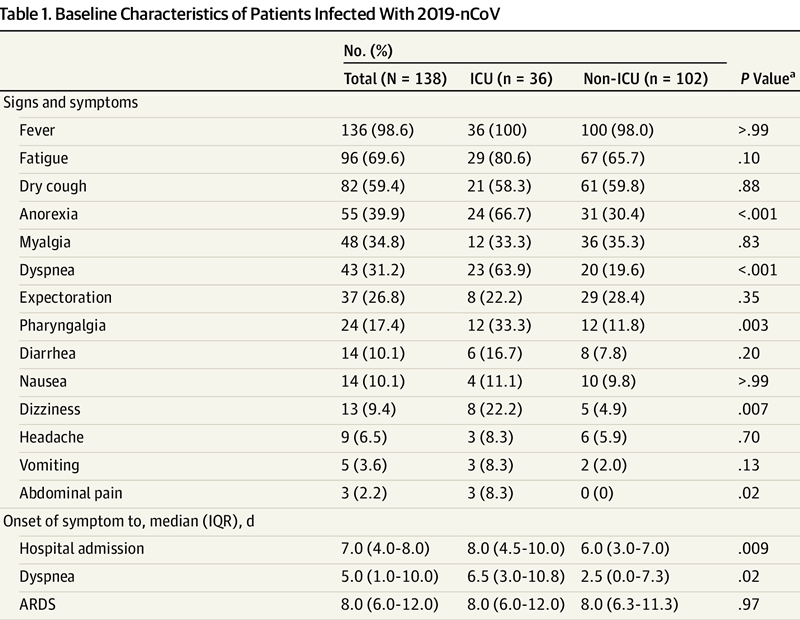
80% of cases are mild
Based on all 72,314 cases of COVID-19 confirmed, suspected, and asymptomatic cases in China as of February 11, a paper by the Chinese CCDC released on February 17 and published in the Chinese Journal of Epidemiology has found that:
- 80.9% of infections are mild (with flu-like symptoms) and can recover at home.
- 13.8% are severe, developing severe diseases including pneumonia and shortness of breath.
- 4.7% as critical and can include: respiratory failure, septic shock, and multi-organ failure.
- in about 2% of reported cases the virus is fatal.
- Risk of death increases the older you are.
- Relatively few cases are seen among children.[7]
با توجه به نوع کروناویروس، علائم میتواند از نشانههای سرماخوردگی عادی تا تب، سرفه، تنگی نفس و مشکلات حاد تنفسی باشد. همچنین بیمار ممکن است سرفههای چند روزه ظاهراً بدون دلیل نیز داشته باشد. کروناویروس مرس، برخلاف سارس، نه تنها دستگاه تنفس بلکه ارگانهای حیاتی دیگر بدن مثل کلیه و کبد را نیز درگیر میکند. در موارد حاد مشکلات گوارشی نظیر اسهال، نارسایی حاد تنفسی، اختلالات انعقادی خون و نارسایی کلیه نیز گزارش شدهاست که این مورد میتواند بیمار را به همودیالیز نیازمند کند.علائم کرونا ویروس جدید که منجر به بیماری COVID-۱۹ میشود، معمولاً چند روز پس از آلوده شدن فرد به ویروس شروع میشود. اما در بعضی افراد ممکن است علائم کمی دیرتر ظاهر شوند.
براساس آمارها و تحقیقات انجام شده علائم میتوانند شامل:
- تب (در۴۳/۸ درصد افراد هنگام پذیرش و ۸۸/۷ درصد افراد هنگام بستری)
- سرفه خشک (در ۶۷/۸ درصد موارد)
- اختلال تنفسی
- احساس خستگی
- درد عضلانی (در ۱۱ تا ۱۴٪ موارد)
- اسهال (در ۳٫۸ درصد موارد)
بهطور متوسط incubation period یا دورهٔ نهفتگی علائم، چهار روز بودهاست. کدورت یا اصطلاحاً Ground-glass opacity در سیتی اسکن قفسه سینه، در ۵۶/۴ درصد موارد دیده شدهاست. ۱۷/۹ درصد از بیماران با بیماری غیر شدید و ۲/۹ درصد از بیماران با علائم شدید، هیچگونه مشکلی را در رادیولوژی یا سیتی اسکن خود نشان ندادند. لنفوسیتوپنی یا کاهش تعداد لنفوسیتهای در گردش خون در ۸۳/۲ درصد افراد در هنگام پذیرش، مشاهده شد.
برخی از افراد هیچ علامتی ندارند، یا فقط علائم خفیف دارند. اما در افراد دیگر، COVID-۱۹ میتواند منجر به مشکلات جدی مانند ذات الریه، عدم دریافت اکسیژن کافی و حتی مرگ شود. این نشانهها بیشتر در افرادی که مشکلات زمینه ای دیگری دارند، دیده میشود.
کروناویروسها (نام علمی: Coronaviruses) خانواده بزرگی از ویروسها و زیر مجموعهٔ کروناویریده هستند که از ویروس سرماخوردگی معمولی تا عامل بیماریهای شدیدتری همچون سارس، مرس و کووید ۱۹ را شامل میشود. کروناویروسها در دهۀ ۱۹۶۰ کشف شدند و مطالعه بر روی آنها بهطور مداوم تا اواسط دهه ۱۹۸۰ ادامه داشت.
این ویروس بهطور طبیعی در پستانداران و پرندگان شیوع پیدا میکند، با این حال تاکنون هفت کروناویروس منتقل شده به انسان، کشف شدهاست. آخرین نوع آنها، کرونای جدید، در دسامبر ۲۰۱۹ در شهر ووهان چین با همهگیری در انسان شیوع پیدا کرد.
واژه "کروناویروس" از کلمه زبان لاتین "corōna" یا کلمه یونانی "κορώνη" به معنی تاج یا هاله گرفته شدهاست. این واژه به مشخصه ظاهری ویریونها (شکل عفونی ویروس) که در زیر میکروسکوپ الکترونی دیده میشود، اشاره دارد که حاشیهای از سطح بزرگ و پیازدار داشته و یادآور تصویری از یک تاج سلطنتی یا تاج خورشیدی است. از این رو کروناویروس را “ویروس تاجدار“ نیز مینامند.
بسته به نوع کروناویروس، روشهای انتقال آن متفاوت است. در برخی از موارد روشهای انتقال بیماری از انسان به انسان شبیه بیماری آنفلوآنزا از طریق سرفه و عطسه است. با این حال احتمال انتقال بیماری در فضای باز بسیار محدود بوده و موارد انتقال انسان به انسان در مواردی رخ دادهاست که افراد به مدت طولانی در فضای بسته در کنار فرد بیمار بودهاند مانند افرادی که در بیمارستانها با بیماران در ارتباط هستند. هنوز مشخص نیست که این بیماری نخستین بار از طریق جانوران به انسان منتقل شدهاست یا از طریق سطوح آلوده به ویروس.[6]
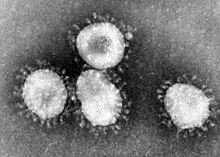
از ۴۰ گونه مختلف خانواده کروناویروس، تاکنون هفت گونه منتقل شده به انسان کشف شده است که موجب بروز بیماریهایی همچون خانواده سرما خوردگی در انسان میگردند. گاهی برخی از کروناویروسها به دستگاه تنفسی حمله میکنند و گاهی علائم خود را در روده و معده افراد نمایان میکنند. علائم ویروس کرونا در ریه، معمولاً در سرماخوردگیهای معمول و نوعی سرماخوردگی ترشح آور به نام پِنومونیا ظاهر میشودکه معمولاً در بیشتر افراد با سرماخوردگی ملایمی همراه است.
در این دسته چهار کروناویروس کشف شدهاست:
- HCoV-229E
- HCoV-OC43
- HCoV-NL63
- HCoV-HKU1
این چهار نوع کروناویروس، به صورت مرتب در جمعیت انسانی ایجاد بیماری میکنند و باعث عفونت سیستم تنفسی در کودکان و بزرگسالان میشوند.
اما انواع دیگری از این ویروس هستند که با علائمی شدیدتر همراه میشوند؛ مانند سارس، مرس و کووید ۱۹.
Infection begins when the viral spike (S) glycoprotein attaches to its complementary host cell receptor. After attachment, a protease of the host cell cleaves and activates the receptor-attached spike protein. Depending on the host cell protease available, cleavage and activation allows the virus to enter the host cell by endocytosis or direct fusion of the viral envelop with the host membrane. eResearch by Navid Ajamin -- spring 2020

Hand sanitizer doesn't kill all viruses, but it is effective against the coronavirus, Dr. Agus explained. The virus is protected by a shell, called an "envelope glycoprotein," which the alcohol scrambles. "When you take away the protective part of the virus, it dies pretty quickly," he said.
While soap and water is also effective against the virus, hand sanitizer is often more convenient. "We are a lazy society — no one wants to sit around for 20 seconds and wash their hands," Dr. Agus said. [2]

On entry into the host cell, the virus particle is uncoated, and its genome enters the cell cytoplasm.The coronavirus RNA genome has a 5′ methylated cap and a 3′ polyadenylated tail, which allows the RNA to attach to the host cell's ribosome for translation.The host ribosome translates the initial overlapping open reading frame of the virus genome and forms a long polyprotein. The polyprotein has its own proteases which cleave the polyprotein into multiple nonstructural proteins.[1]
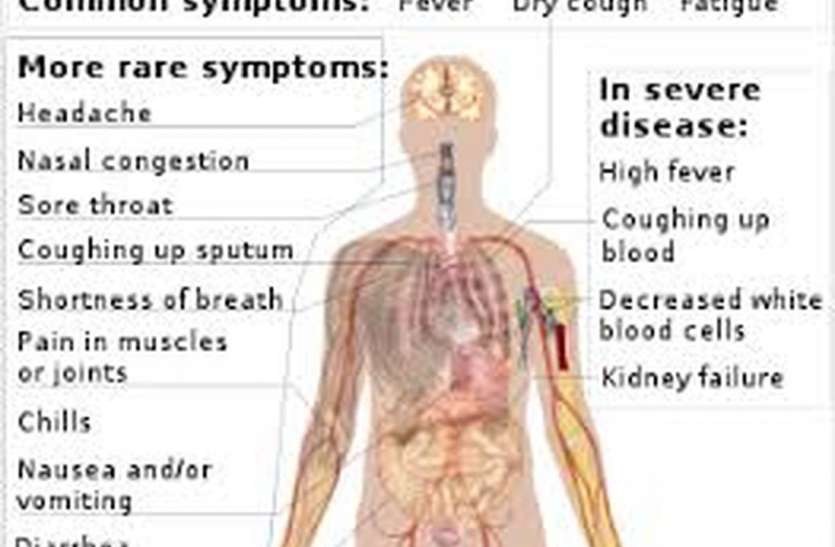
What are the symptoms this coronavirus causes?
According to the WHO, the most common symptoms of Covid-19 are fever, tiredness and a dry cough. Some patients may also have a runny nose, sore throat, nasal congestion and aches and pains or diarrhoea. Some people report losing their sense of taste and/or smell. About 80% of people who get Covid-19 experience a mild case – about as serious as a regular cold – and recover without needing any special treatment.
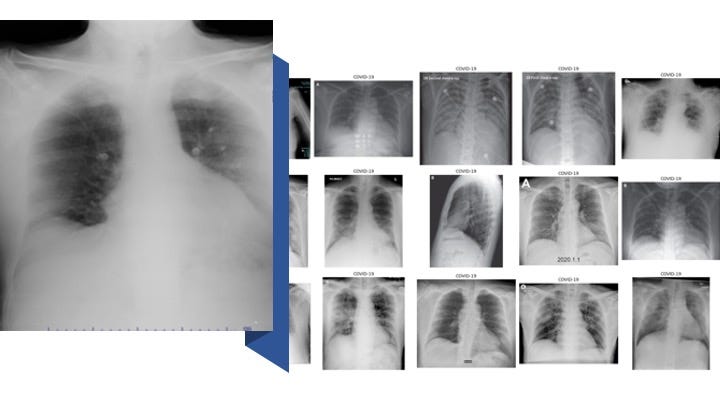
About one in six people, the WHO says, become seriously ill. The elderly and people with underlying medical problems like high blood pressure, heart problems or diabetes, or chronic respiratory conditions, are at a greater risk of serious illness from Covid-19.
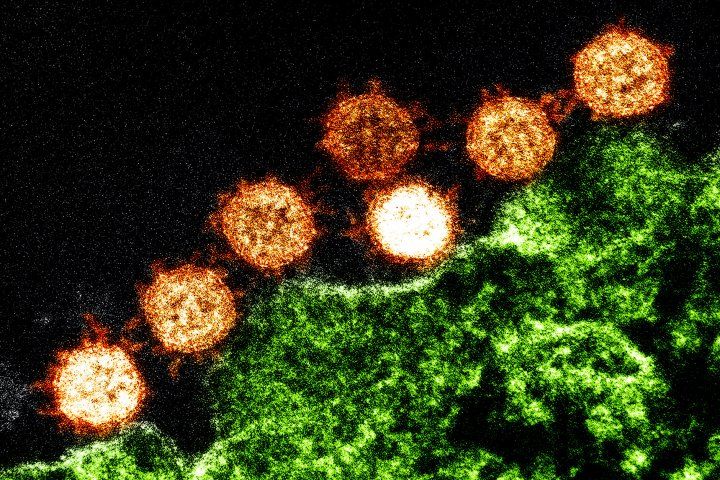
Electron micrograph of SARS virus particles (orange) near an infected cell (green). -- www.ucsf.edu
Like SARS, the new virus from Wuhan is a coronavirus with a crown-like structure. Image credit: NIH --
In the UK, the National health Service (NHS) has identified the specific symptoms to look for as experiencing either:
- a high temperature - you feel hot to touch on your chest or back
- a new continuous cough - this means you’ve started coughing repeatedly
As this is viral pneumonia, antibiotics are of no use. The antiviral drugs we have against flu will not work, and there is currently no vaccine. Recovery depends on the strength of the immune system.[3]
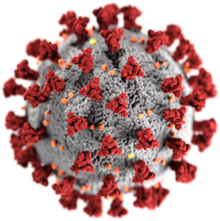
When to Seek Medical Attention
If you develop emergency warning signs for COVID-19 get medical attention immediately. Emergency warning signs include*:
- Trouble breathing
- Persistent pain or pressure in the chest
- New confusion or inability to arouse
- Bluish lips or face
*This list is not all inclusive. Please consult your medical provider for any other symptoms that are severe or concerning.[4]
There is much to learn about the novel coronavirus that causes coronavirus disease 2019 (COVID-19). Based on what is currently known about the novel coronavirus and similar coronaviruses that cause SARS and MERS, spread from person-to-person with these viruses happens most frequently among close contacts (within about 6 feet). This type of transmission occurs via respiratory droplets. On the other hand, transmission of novel coronavirus to persons from surfaces contaminated with the virus has not been documented. Transmission of coronavirus occurs much more commonly through respiratory droplets than through fomites. Current evidence suggests that novel coronavirus may remain viable for hours to days on surfaces made from a variety of materials. Cleaning of visibly dirty surfaces followed by disinfection is a best practice measure for prevention of COVID-19 and other viral respiratory illnesses in households and community settings.[5]

Reference:
- en.wikipedia.org/wiki/Coronavirus
- cbsnews.com/news/hand-sanitizer-coronavirus-make-your-own
- theguardian.com/world/2020/mar/27/coronavirus-symptoms-what-are-they-and-should-i-call-the-doctor
- cdc.gov/coronavirus/2019-ncov/symptoms-testing/symptoms.html
- cdc.gov/coronavirus/2019-ncov/prepare/cleaning-disinfection.html
- fa.wikipedia.org/wiki
- worldometers.info/coronavirus/coronavirus-symptoms
برچسب : نویسنده : healthy4you بازدید : 142
